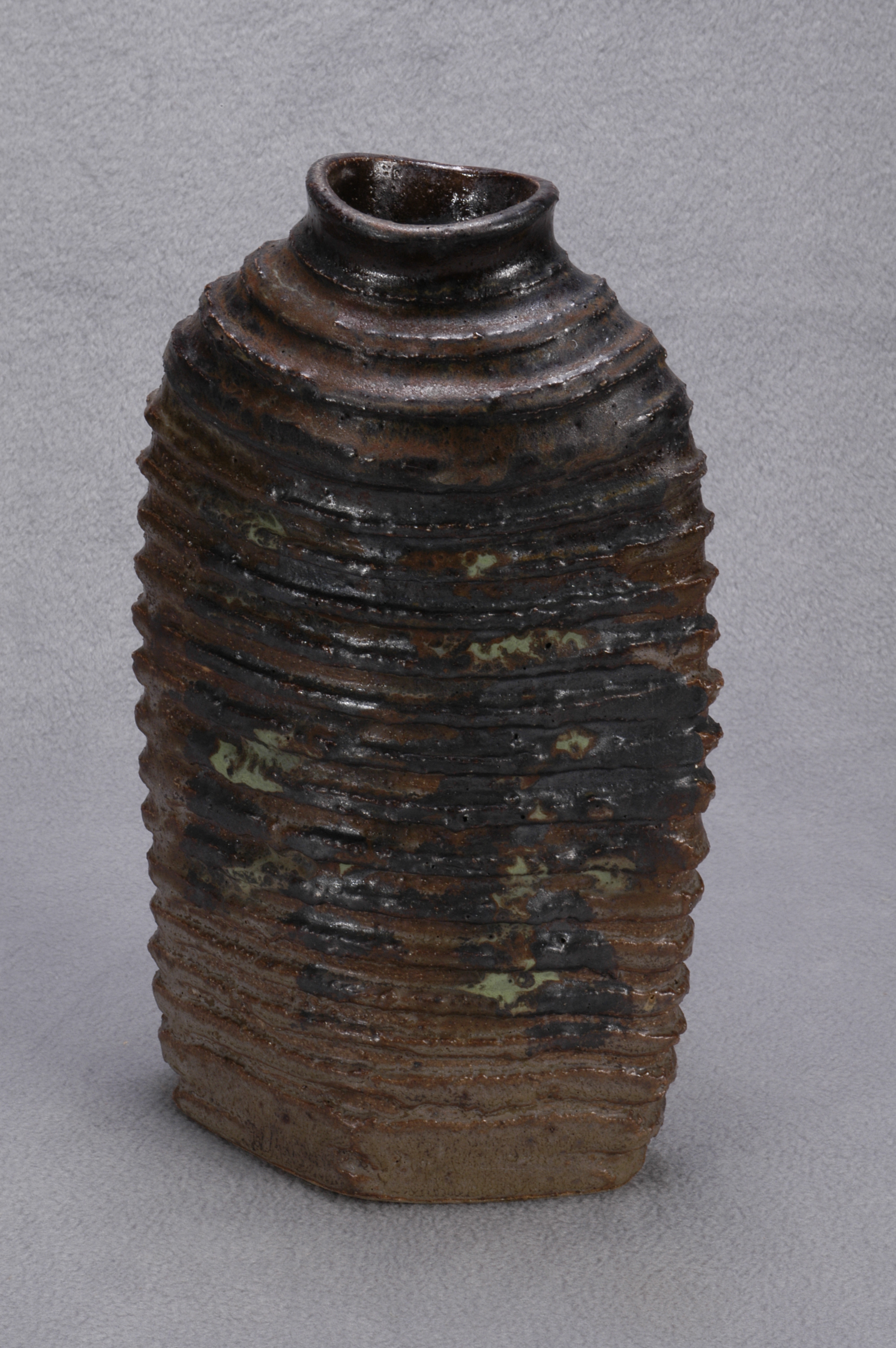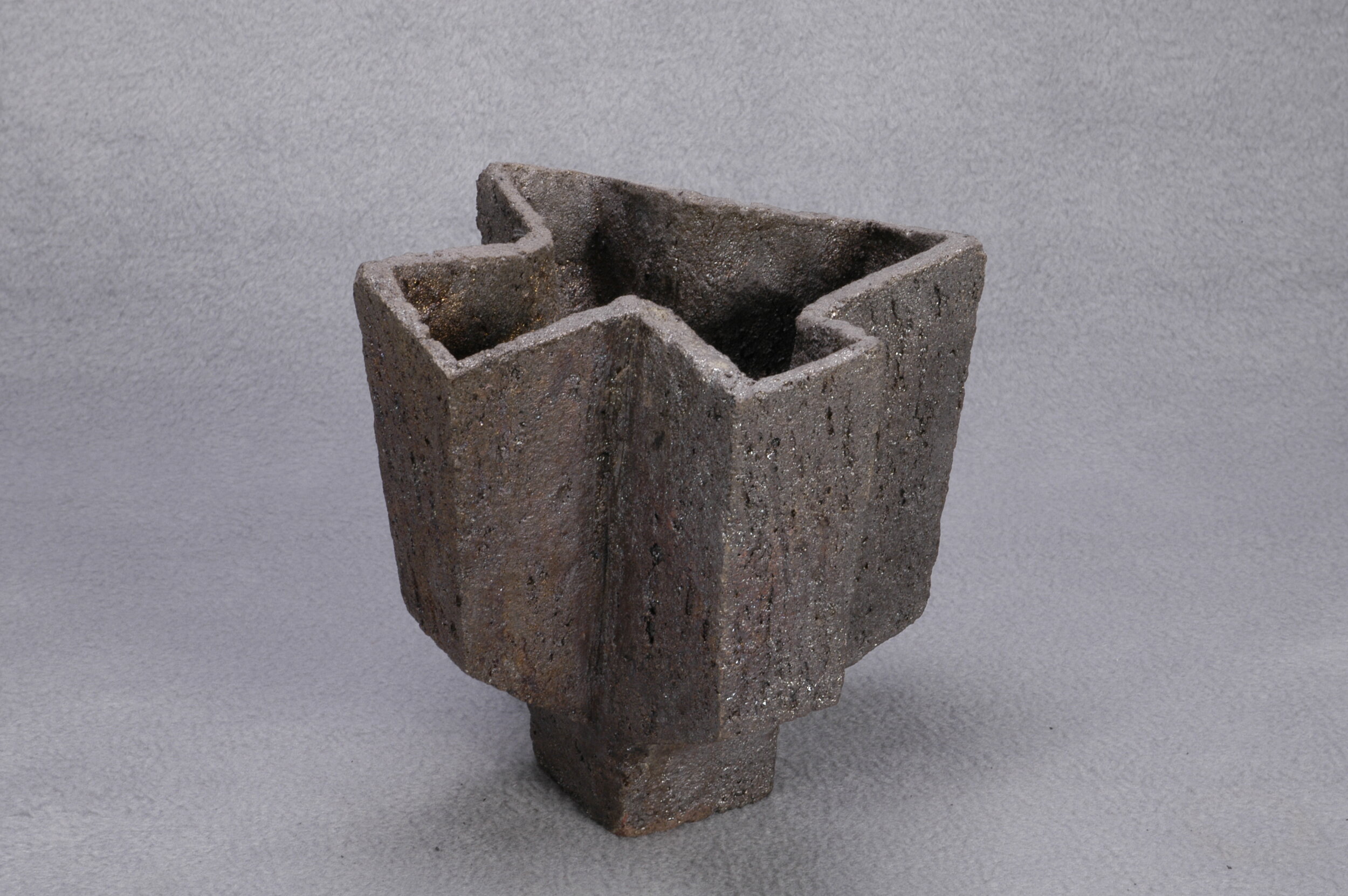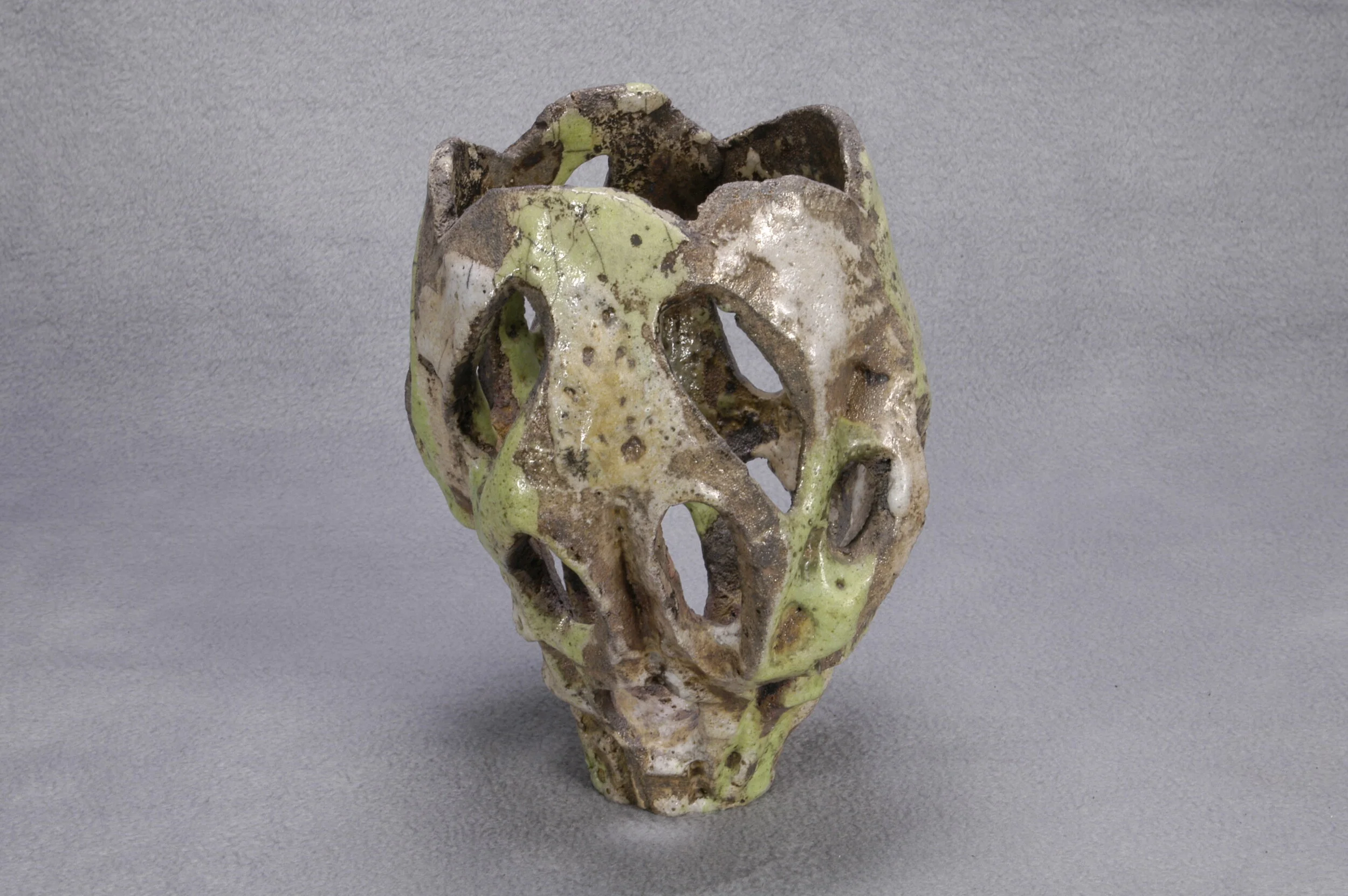



































































Dante made pots in stoneware and Raku; above is a selection of his work. While stoneware is fired between 1200-1300°C, fixing the glaze, which is then revealed after the chemical reaction has taken place, the Japanese technique of Raku requires the artist to make decisions in the course of the firing that will alter the chemical reaction in real time.
Raku pots are made from clay which has been mixed with grog, a raw material high in silica and alumina, which adds a gritty, rustic texture to the clay, sometimes called ‘tooth’. This grog-clay mix enables the pot to withstand extraordinary changes in temperature. The typical raku pot, which can either be thrown or hand-molded, is biscuitted in an ordinary kiln and then glazed. This part of the process is similar to what is involved in the firing of stoneware, except stoneware clay is not typically mixed with grog.
For Raku, a special kiln is used in the second firing to fix the glaze, at a much lower temperature than stoneware – up to 1000°C – and each pot is fired individually. By contrast to stoneware, the artist decides when to remove each pot, which is then plunged into a reducing agent, for instance wood shavings, grass or straw, which will remove oxygen in the glaze. This will change the colour drastically, depending on how much reducing agent is used, and the length of time the reaction is allowed to go on for. To stop the reaction, the artist must sink the Raku pot into cold water – a change of temperature between 1000°C to the water at room temperature.
Whereas in stoneware the glaze is applied and then left to the happenstance of the kiln to determine the final outcome, in Raku the potter acts exactly as a painter – setting the colours and deciding by his own immediate and spontaneous instinct what to do. Of course the potter’s control of his red-hot clay vessel as he pulls it from the kiln and in an instant’s decision plunges it into grass or straw or water, is of a different kind from the painter’s control of his brush – and the results of ‘reducing’ a glaze in this way can never be wholly predicted.
Dante’s pots form part of the permanent collection at The Ashmolean Museum in Oxford and York Museum’s Trust.